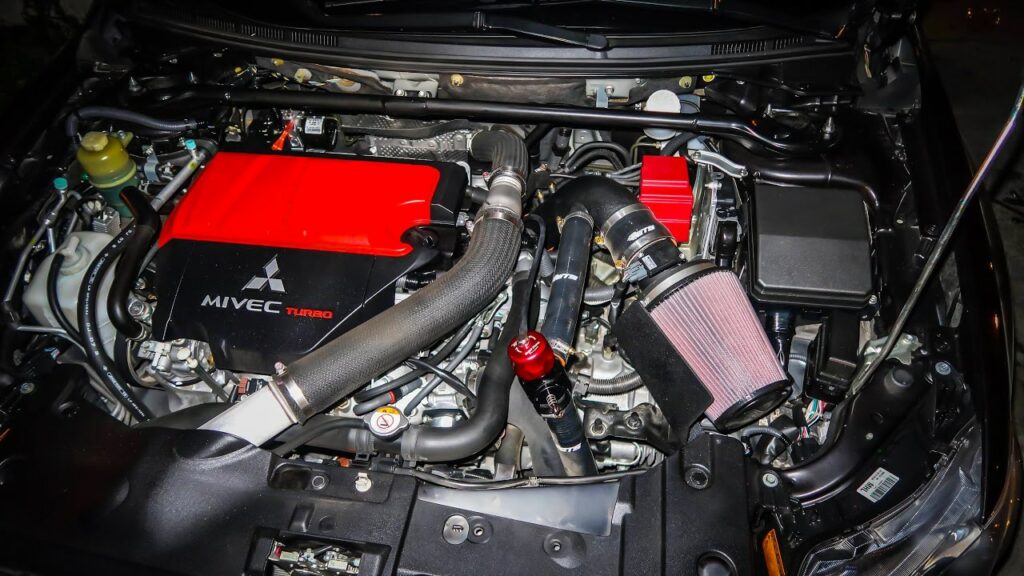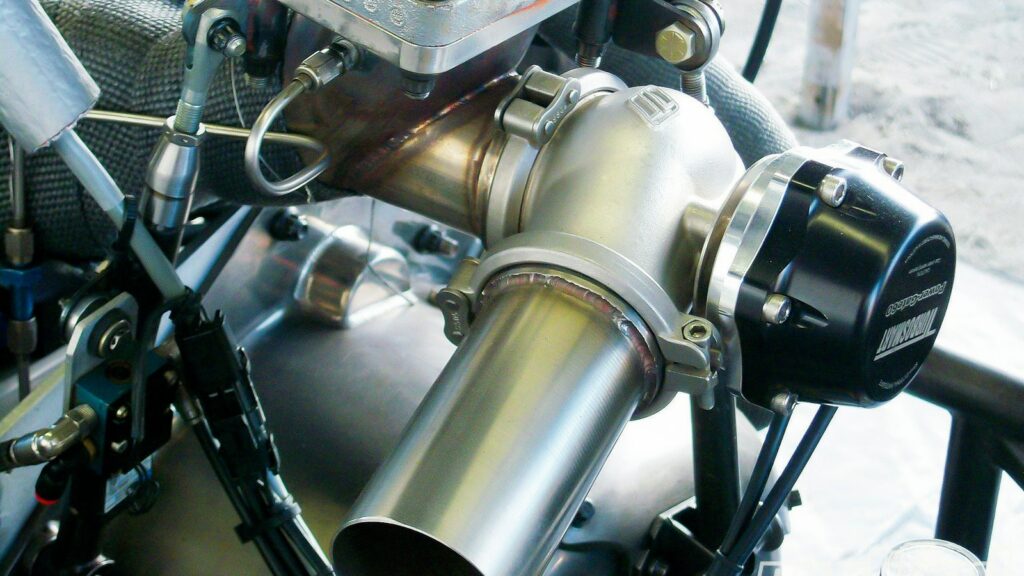Your adult brain probably loves turbochargers because they’re an efficient source of power — the child in you, however, loves them for the awesome sounds they make.
If you’re new to the world of modifying cars and turbocharged engines, turbo flutter might seem like an unheard-of phenomenon. But once you start paying attention, turbo flutter is everywhere. It creates a unique sound that some motorheads love, while others hate.
But what exactly is it? and more importantly — should you be worried about it?
In this comprehensive guide, we’ll dive deep into the world of turbo flutter to break down exactly what turbo flutter is and if you should be worried about it.
What is Turbo Flutter?
Turbo flutter, also known as compressor surge, occurs when you step off the accelerator after achieving peak boost. While the engine shuts off airflow, all the pressure from the turbo is still there — looking for somewhere to escape.
The only available path of least resistance is straight back through the turbo and so this backpressure is what causes turbo flutter.
Most manufacturers eliminate turbo flutter through a component known as the blow-off valve (BOV).
However, if you start tweaking your set-up by using an aftermarket BOV with a stiffer spring, or removing your blow-off valve altogether, turbo flutter can rear its head as the pressure forces its way back through the turbo.
While turbo flutter might make a lot of noise, it actually doesn’t do a thing for performance! That’s because it’s caused by backpressure after you release the throttle. In other words, turbo flutter comes into play after the engine does its work.
The Role of a Blow-off Valve vs Wastegate
Many people confuse blow-off valves and wastegates, and while both these car parts are similar, they perform entirely different functions and for entirely different reasons.

As we already mentioned, blow-off valves exist to eliminate turbo-flutter. They sit on the intake side of the turbo, and they’re normally closed.
When a BOV detects an excessive amount of pressure in the intake past the turbo, it opens up and allows that pressure to escape.
Depending on the type of BOV in question, this pressure is either vented out into the atmosphere or redirected back into your vehicle’s intake.
Meanwhile, wastegates sit on the exhaust side of the turbo and prevent it from creating too much boost. They do this by directing exhaust pressure around the turbine inside the turbo once it’s reached the desired amount of boost.
So, while both wastegates and blow-off valves redirect excess pressure, the difference between a wastegate vs a BOV is the location and why it’s redirecting the pressure.
Wastegates protect the turbo from producing too much boost, while a BOV protects the turbo from all the pressure that boost creates.

What Does Turbo Flutter Do?
While it might make some cool sounds, the truth is that it doesn’t do much.
It’s similar to the sound you hear from a turbo wastegate or a blow-off valve. While both these components perform valuable functions, the sound they create doesn’t do a thing.
Turbo flutter works the same way; the turbo is extremely valuable, but the sound or the “flutter” doesn’t do anything. The only difference is that while the wastegate and blow-off valve are supposed to make their sounds, a turbo isn’t.
Is Turbo Flutter Bad?
The answer to this question isn’t as straightforward as it might seem. It’s complicated by the fact that there are so many misconceptions about turbo flutter out there. But let’s start with the basics.
Turbo flutter is nothing more than a ton of backpressure flowing through your turbo, and as such, it creates a ton of stress on your turbo.
The manufacturer never designed the turbo to handle all this stress, and so it can cause your turbocharger to wear prematurely.
So, that means turbo flutter is bad, right? The truth is that it can be, but it usually isn’t. Yes, the manufacturer didn’t design the turbo to handle excessive stress, but they did design the turbo to handle tons of boost, which means it’s pretty durable.
While turbo flutter puts some stress on your turbo — unless you throw an egregious amount of backpressure at it, the little wear and tear won’t make such a noticeable difference on when you need to replace your turbo.
Can You Create or Prevent It?
Whether you’re trying to eliminate turbo flutter to protect your car, or you want to hear the signature sound (potential damage be damned), there are a few things you can do.
The easiest way to create it is to remove the blow-off valve. While you won’t find a mechanic that recommends this, it’s unlikely to cause any damage to your vehicle if you aren’t creating loads of backpressure.
As soon as you remove the blow-off valve and plug the hole, there’s nowhere for the pressure to go but back through the turbo, and you’ll get the signature sound.
Conversely, if you’re trying to eliminate turbo flutter, the best thing you can do is install a blow-off valve or replace yours if it isn’t working correctly.
Almost every vehicle with a turbo comes with a blow-off valve, and if it’s working properly, you won’t get any significant turbo flutter.
Should You Try To Eliminate It?
For most people, it comes down to personal choice and whether they like the sound or not. It’s pretty easy to eliminate with a blow-off valve, and almost every turbocharged car has one.
Keep in mind that excessive backpressure can damage your turbo. Just because you can run a turbocharged car without an intercooler doesn’t mean you should!
In the case of your turbo however, unless you’re running a lot of boost and pushing your car to its limits, you shouldn’t have to worry about this.
So, is turbo flutter right for your vehicle? Probably not — but if you love the sound and won’t be creating too much pressure for the turbo to handle, why not go for it?
Of course, there are other ways to make your car louder, like your exhaust.
What’s your experience with turbo flutter? Are you looking for ways to hear that notorious sound or do you want to eliminate it entirely? Leave a comment because we’d love to hear from you!


5 comments
I’ve always loved that sound, but trying to recreate it on a car that the turbo is being pushed probably isn’t a good idea. If I could get that sound safely I would do it in a heart beat. Or with a little wear and tear. Once you’ve heard a Ferrari at the track you’ll be in love with it too!!
So how do you eliminate turbo flutter if you already have a non-recirculating TiAL Q BOV, for instance? Get a lighter BOV spring?
Yeah, that should do it. I have flutter with mine, but only under light boost. The BOV opens up if it’s got a lot of back pressure. So I get the best of both worlds. I can enjoy the flutter, but I know the BOV will do it’s job if the pressure is too high
I prefer a stealth setup that is durable and technically correct. I will try now removing my BOV silencer and test for reduced flutter.
Can stiffer springs stop turbo flutter?